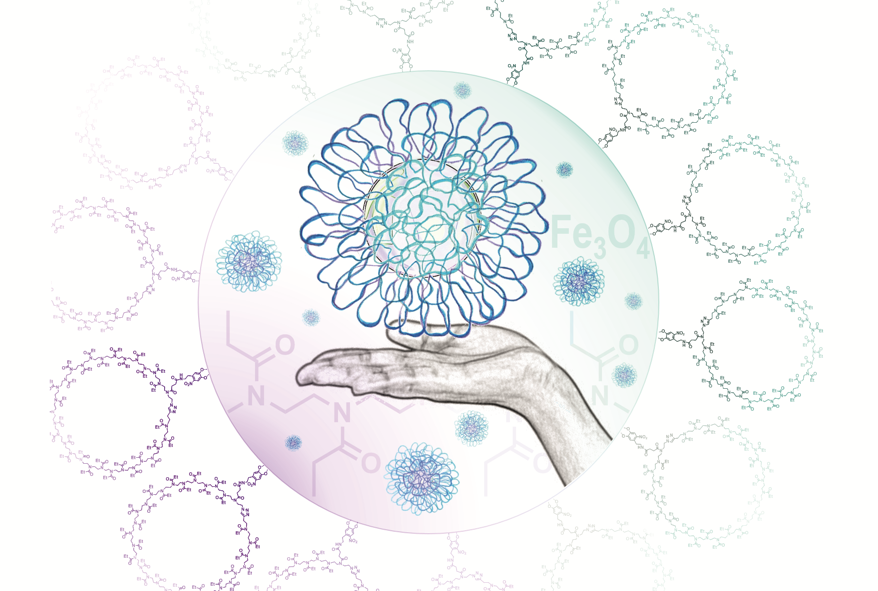Polymer “Shields” Designed to Last
A team of researchers from the Department of Materials led by Dr. Edmondo M. Benetti have demonstrated that when cyclic polymer ligands are grafted onto inorganic NPs, ultra-dense and highly compact brush shells are generated.
Cyclic poly-2-ethyl-2-oxazoline (PEOXA) ligands applied on superparamagnetic iron oxide nanoparticles (NPs) provide enhanced colloidal stability and bioinertness in physiological media. When linear brush shells fail in providing colloidal stabilization to NPs the cyclic ones assure long lasting dispersions. While the thermal-induced de-hydration of linear PEOXA shells cause irreversible aggregation of the NPs, the collapse and subsequent re-hydration of similarly grafted cyclic brushes, allow the full recovery of individually dispersed NPs. Although linear ligands are densely grafted on iron oxide cores, a small plasma protein like bovine serum albumin (BSA) still physisorbs within their shells. In contrast, the impenetrable entropic shield provided by cyclic brushes efficiently prevents nonspecific interaction with proteins. The study of Dr. Benetti and coworkers has been recently published as "Very Important Paper" on Angewandte Chemie International Edition.
- Dr. Edmondo M. Benetti
- Surface Science and Technology
- Morgese, G., Shirmardi Shaghasemi, B., Causin, V., Zenobi-Wong, M., Ramakrishna, S. N., Reimhult, E. and Benetti, E. M. (2017), Next-Generation Polymer Shells for Inorganic Nanoparticles are Highly Compact, Ultra-Dense, and Long-Lasting Cyclic Brushes. Angew. Chem. Int. Ed. external page DOI:10.1002/anie.201702423
